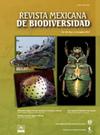Benthic macroinvertebrate communities and water quality assessment in high Andean Wetlands Callali-Oscollo, Arequipa-Cusco, Peru
IF 0.8
4区 环境科学与生态学
Q4 BIODIVERSITY CONSERVATION
引用次数: 0
Abstract
High Andean wetlands are fragile systems, vulnerable to human activity and climate change. In the Arequipa region (Peru), there are high Andean lotic and lentic systems currently affected by livestock raising, fish farming, and dams. The aim of the study was to evaluate the aquatic invertebrate community in the Callalli-Oscollo wetlands and the possible impact of human activities. Samples were taken from November 2017 to October 2018 at 4 sampling stations in lotic environments and 2 in lentic environments. Macroinvertebrates were identified to the family level. The following were determined to evaluate community structure: richness, relative abundance, Shannon-Wiener diversity, Simpson dominance, Pielou evenness, and true diversity. The indices ABI, BMWP/Bol and nPeBMWP were applied to evaluate the ecological quality of the environments sampled. Thirty families were recorded in lotic environments, the most abundant being Chironomidae, Naididae, Limnesiidae, Elmidae, Baetidae and Lumbriculidae. The ecological quality was good, except at the station associated to the dam, where it was doubtful. Twenty-six families were recorded in lentic environments, the most abundant being Cyprididae, Naididae and Corixidae. The macroinvertebrate communities in high Andean environments reflect ecosystem conditions. Environments associated to human activity have lower ecological quality.安第斯高原湿地底栖大型无脊椎动物群落与水质评价
安第斯高原湿地是脆弱的系统,容易受到人类活动和气候变化的影响。在阿雷基帕地区(秘鲁),目前有受畜牧业、鱼类养殖和水坝影响的安第斯高原丘陵和扁豆系统。该研究的目的是评估卡拉利-奥斯科洛湿地的水生无脊椎动物群落以及人类活动可能产生的影响。样本于2017年11月至2018年10月在4个乳液环境采样站和2个慢镜头环境采样站采集。大型无脊椎动物被鉴定为家族级别。确定了以下指标来评估群落结构:丰富度、相对丰度、Shannon Wiener多样性、Simpson优势度、Pielou均匀度和真实多样性。应用ABI、BMWP/Bol和nPeBMWP指数对采样环境的生态质量进行评价。在激流环境中记录了30个科,其中最丰富的是摇蚊科、奈迪科、林蛙科、榆树科、贝蒂科和林蛙科。生态质量良好,但与大坝相关的车站除外,那里的生态质量令人怀疑。在慢生环境中记录了26个科,其中最丰富的是莎草科、奈迪科和科里科。安第斯高原环境中的大型无脊椎动物群落反映了生态系统条件。与人类活动相关的环境具有较低的生态质量。
本文章由计算机程序翻译,如有差异,请以英文原文为准。
求助全文
约1分钟内获得全文
求助全文
来源期刊

Revista Mexicana de Biodiversidad
环境科学-生物多样性保护
CiteScore
1.50
自引率
11.10%
发文量
69
审稿时长
12-24 weeks
期刊介绍:
Revista Mexicana de Biodiversidad appears in 4 issues per year and publishes the products of original scientific research regarding biodiversity of the Americas (systematics, biogeography, ecology and evolution), as well as its conservation and management.
The journal ensures high standards with a system of external peer review, and is included in the list of excellence of journals of the National Council of Science and Technology (CONACyT, Mexico). It is currently included in ASFA, Biological Abstracts, Biological Sciences, Latindex Periódica, RedALyC, Web of Science (Thomson Reuters), SciELO, SCOPUS, and Zoological Records.
 求助内容:
求助内容: 应助结果提醒方式:
应助结果提醒方式:


